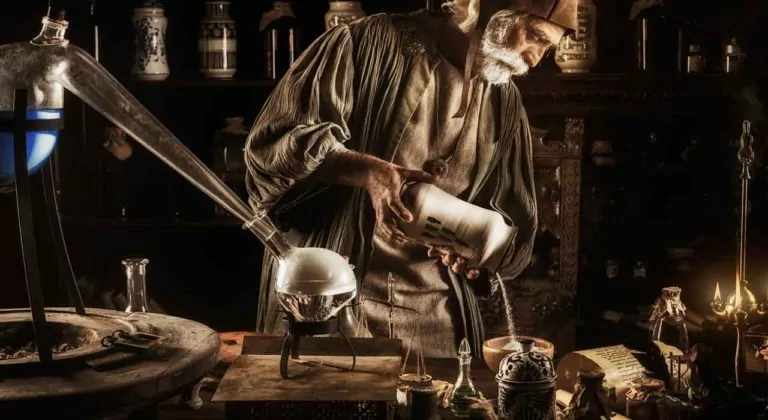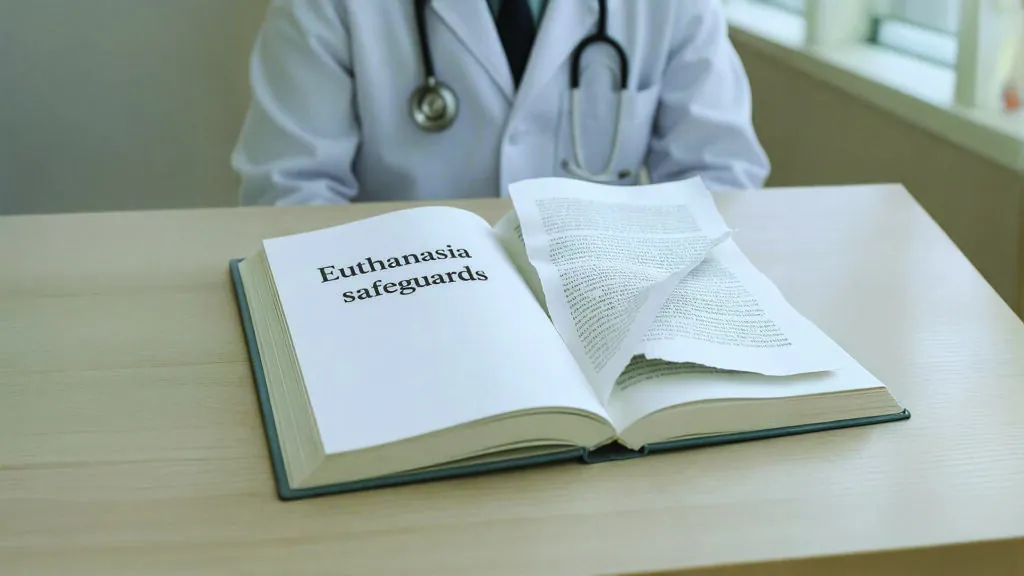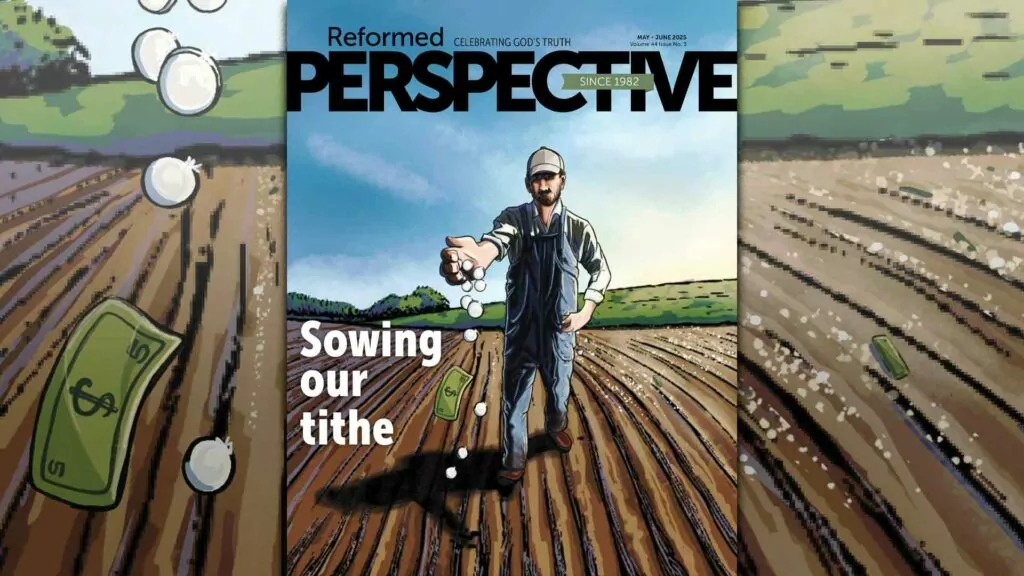They say that the optimist sees the glass half full, the pessimist sees the glass half empty, and that the alchemist sees the glass completely full – half in liquid state and half in vapor state.
So what is alchemy? The dictionary defines alchemy as the medieval forerunner of chemistry, based on the supposed transformation of matter. It was a preoccupation with transmuting a common substance, one of little value, into a substance of great value.
Alchemy was accepted from the Middle Ages on, until some time in the 1600s. It was based on the belief that all metals, indeed all matter, contained one common element, of which the purest and most perfect form on earth was gold. Wealthy patrons often hired alchemists to conduct research on their behalf, or better put, to make money for them. The fact that they never saw returns on their investment, did not stop their inborn desire to obtain something for nothing. Perhaps it was like buying a ticket to the lottery today with the hope that maybe, just maybe, your “lucky” number will come up.
In 1463 Edward the Fourth of England granted a Sir Henry Grey of Codnor in Derbyshire authority to labor for the transmutation of metals. This permission for research was given at Sir Henry Grey’s own cost provided that he answer to the king if there was any profit. The ensuing years showed no profit at all. The king, however, must have desired to make some money because thirteen years later he again granted a license to two other men, a David Beaupee and a John Merchant, to “practice for four years the natural science of the generation of gold and silver from mercury.”
There are other records of such dealings or authorizations. Presumably, the need for such license was based on a royal claim to mines and other precious metals. But regardless of royal license, all experiments led to nothing.
Last of the alchemists
James Higginbotham was one of the last alchemists. Born in London, England in 1752, his surname was changed to Price following the wishes of a relative who bequeathed him some money. And perhaps, in the long run, this new surname proved rather apt for him. Attending Oxford University, James Price seemed to be a bright young man. He obtained his M.A. at the age of 25, was made a doctor of medicine a year or so later, and became a member of the Royal Society when he was 29.
James Price was an able, but amateur, chemist and certainly not an adventurer looking for wealth or power. A rich man in his own right, he had a family and possessed a good name. His portrait shows the face of a rather serious, handsome young man, perhaps somewhat introspective, wearing a well-groomed wig. As a member of the Royal Society, James had already distinguished himself as being reputable in the field of chemistry. He loved science, and according to records, was an amiable, well-respected man and one with no skeletons in his closet.
In the year 1781, James Price believed he had succeeded in compounding a wondrous powder, a powder capable of converting mercury and other inferior metals into gold and silver. He wavered before making his “discovery” public. However, he could not help but speak of it with a few friends and they had animated discussions together. At long length, Price decided to conduct some experiments in front of a select group of men – men of rank, science and public renown. This he did from the 6th of May, 1782 to the 25th of May, 1782 – a duration time of almost three weeks.
There were seven experiments in all and these were witnessed by peers, baronets, clergy, lawyers, and chemists. All the experiments resulted in gold and silver, in great and small quantities, and were apparently produced from mercury. Some of this “resulting gold” was presented to George III who received the gift graciously. The University of Oxford, where Price had been a student at Orial College, bestowed the degree of M.D. on him; and his work, containing an account of his experiments, ran through two editions in a few months.
The general public, reading of these experiments, was enthusiastic. People saw them as the beginning of an era of prosperity for England. This discovery would surely wipe out poverty; introduce a wonderful economy, and usher in a society of peace. There were those who doubted and were sure that Price was mistaken. Conflict ensued between various groups of Englishmen.
Do it again
At this point, the Royal Society, of which Price was a member, felt bound to intervene. They asked James to prove to his fellow Society members the truth of his transmutations and to repeat the experiment in their presence.
Price, who had initially been very positive about his work, was evasive in responding. He remonstrated that he did not want to repeat the experiments on the grounds that the preparations had been difficult and harmful to his health. Besides, had he not already demonstrated the veracity of his work in the presence of other witnesses, and should that not be enough? Arguing that the result of the experiments had not been financial gain, (though the public supposed it was so), Price went on to say that it had cost about seventeen pounds of sterling to make one ounce of gold.
The questions about repeating the experiments went on for some time. Price would not agree to meet with the Royal Society. Yet the honor of this first scientific body in the world seemed to be implicated. It had been founded in 1660, granted a charter by Charles II, and named the Royal Society. It was the oldest national scientific institution in the world – promoting science, recognizing excellence in science and providing scientific advice. They more or less insisted that he repeat his work. Price was hurt. “Would you treat me evilly and not believe me?” he said. “My wealth, reputation, and position in society should free me from suspicion.”
At long last James Price agreed to make another powder and satisfy the Royal Society. In January of 1783 he left for his laboratory in Guildford, promising to return in a month’s time. Upon his arrival, he distilled a quantity of laurel water – a quick and deadly poison also known as prussic acid. Then he wrote up his will beginning: “….believing that I am on the point of departing from this world….” After this, he commenced working on the powder. Six months later, he reappeared in London and formally invited as many members of the Royal Society as wanted to meet him at Guildford on August 3rd of 1783.
There had been a change in public acclaim. Whereas before people had expressed great faith in James Price and his transmutation of base metals into gold, they now were no longer supportive or interested. Only three members of the Royal Society arrived at the laboratory on August 3. Price received them warmly but could not have helped but feel their air of skepticism. Excusing himself and stepping aside for a moment, he swallowed a vial of the laurel-water he had prepared. The three men who had come into his laboratory immediately noted a change in his appearance. The man suddenly appeared very ill. They did not guess why and called for a doctor. But within minutes James Price was dead. He was only thirty-one years old.
There have been many speculations as to why James Price would take his life! Had he deceived both himself and his spectators with his first experiment? Had he been willfully ignorant of this deception? Had he discovered an error? Had he been unable to bear the consequences of mocking? Did he not have the moral courage to confess or own up to a mistake? After his suicide, the Royal Society refused to carry out any further investigations into Price’s claims. It is a mystery and upon reading of it we can only speculate.
Getting rich, for real
People crave quick wealth. In the US approximately 183 million people play a lottery at least one time each year. In England, James Price’s homeland, 70% of the population takes part in a lottery on a regular basis (Lottery Demographics, April 2018). It seems that most people think a change in their lives from perceived hardship to wealth is the answer to their troubles.
Thoughts travel on. There is Someone Who can transform base materials into gold. There is One who can transform red into white. Not many people, however, walk into His laboratory to behold the truth of His claim.
Strange that the One Who can transform dirt, that is to say, sin, into the golden crown of eternal life, was admired one day and much sought after, and killed the next.
His laboratory was Golgotha, and Isaiah 1:18 invites many to come, believe and be transformed:
“Come now, let us reason together, says the LORD: though your sins are like scarlet, they shall be as white as snow; though they are red like crimson, they shall become like wool.”












